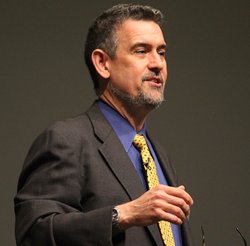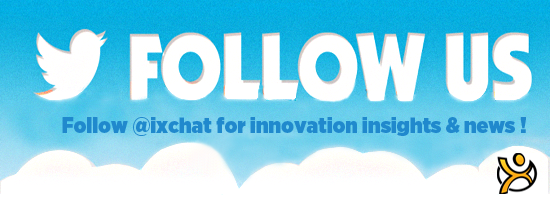Successful Strategy: Why it’s a Social Thing

What you study in college typically has little correlation to what you end up pursuing afterward. I was an extreme example.
Majoring in math, I quickly took to the streets, performing improvisational theater. I culled together artists of all mediums with a mission to produce art that garnered audience participation. With patience, I developed methodologies to catch people’s attention mid-commute and join in with the performance.
Fast forward to my time at The World Bank where I was able to use the same methodologies to create events, each one involving thousands of people. Pulling these off meant not only keeping attendees engaged and listening but fostering a buy-in reaction. Audience members didn’t just see eye-to-eye with the content, they wanted more.
Recently, as a strategist, I’ve seen this kind of participation manifest as a social phenomenon.
Igniting buy-in is key to successful execution. But understand that it travels socially, between individuals and through morale.
We know enacting change requires follow-through, which requires an inspired commitment by all parties involved. But how do you get that commitment? The answer lies in infusing key constituencies with enthusiasm. But, how?
Consider who needs to be on board for success. Your board of directors? The senior leadership team? Particular committees? Indispensable coalitions like these have the potential to create the kind of zeal that trickles down to all participants, large and small. Igniting this flame is key to successful execution. But understand that it travels socially, between individuals and through morale. The investment must come emotionally as well as intellectually through the coalition’s social web.
For example, I recently led a conversation for the leaders of six organizations, each with individual mandates and missions, but who overlap when it comes to the profession they support. I was brought in to lead a discussion on finding synergies, making a larger contribution to the world that would establish their profession as an able player when it comes to the environment. But, many of the leaders came to the session with concerns over resources: how can they take on another initiative when their plates are already full? Who would do the work? How would it be funded? Where would they find the time? This kind of operational questioning is critical when it comes to execution, but for visioning it can be a dream killer.
I conducted short interviews with each of the leaders in anticipation of our time together. During those sessions, I learned that some had worked directly with indigenous peoples, and almost all of them sympathized with the respect first peoples have for our relationship to the living Earth. So, I decided to start off our conversation with an invocation I learned many years ago called, the Prayer of the Three Times. For another audience, it would not have worked, but for this group it was perfect. Here is what I said:
We ask for the presence of our ancestors – those who used to be here on this planet. And not just the human ancestors, but those who used to fly through the sky or swim in the oceans and creeks and rivers. In fact, the oceans and creeks and rivers themselves that used to exist on the planet. And the wind currents that have dissipated, and the animals that have turned to dust. And our own grandparents and their parents and their parents and their parents. We ask for their presence now because they know what the gift of life truly is. They recognize how short our span on this world is. We ask them to come and be with us now and guide our actions so that we can do what is right in our hearts.
We ask for the presence of all those whom we share this world with, to come and be with us now. To the strangers we pass on the street, to our families and our loved ones. And not just to humanity but to the grass that grows in our lawns and the trees in our forest, snakes that wriggle through the soil, the worms, the bacteria, the soil itself, the mountains and the valleys. We ask all aspects of the living earth to come and join us now to work together. To lean on us and let us lean on them, for we are each teachers and we are each students. Let us find what it is we have to share with each other, and use it to build a world that is worthy of our spirits.
And we ask for the unborn children to join us. Our own grandchildren and their children and their children. And the fish which have not yet hatched from eggs or the lions that have yet to be conceived. The valleys that have yet to be carved in the earth, the mountains that have yet to rise up, and the grass that has yet to grow. We ask for all aspects of our future world to come and be here with us and remind us that it is their world that we hold in our hands and that our actions will be scaled an multiplied down through time, and form what it is they inherit. We ask them to come and sit with us and be with us here so that we can do what is right for them, so that we can live our lives in a way that honours their spirits.
This inspirational prayer, this bit of theater, deepened the conversation. Because this group had already demonstrated a willingness to be moved by higher aspirations when it comes to the Earth and its inhabitants, it was an excellent tool to shift the conversation to new visions. And that it did. We emerged with a set of questions the group was committed to exploring. For example, How do we creatively disrupt our current practices to assume our place as contributors to the success of humanity in a global ecosystem?
image credit: bigstockphoto.com
Wait! Before you go…
Choose how you want the latest innovation content delivered to you:
- Daily — RSS Feed — Email — Twitter — Facebook — Linkedin Today
- Weekly — Email Newsletter — Free Magazine — Linkedin Group
 Seth Kahan is a Facilitator, Advisor, Mentor, and Speaker who helps leaders identify, influence, and leverage emerging trends for business growth. He has consulted with CEOs and executives in organizations that include Shell, World Bank, Peace Corps, Marriott, Prudential, Project Management Institute, and NASA. He is the author two books – Getting Innovation Right: How Leaders Leverage Inflection Points to Drive Success and Getting Change Right: How Leaders Transform Organizations from the Inside Out Learn more at VisionaryLeadership.com and follow @SethKahan
Seth Kahan is a Facilitator, Advisor, Mentor, and Speaker who helps leaders identify, influence, and leverage emerging trends for business growth. He has consulted with CEOs and executives in organizations that include Shell, World Bank, Peace Corps, Marriott, Prudential, Project Management Institute, and NASA. He is the author two books – Getting Innovation Right: How Leaders Leverage Inflection Points to Drive Success and Getting Change Right: How Leaders Transform Organizations from the Inside Out Learn more at VisionaryLeadership.com and follow @SethKahan
NEVER MISS ANOTHER NEWSLETTER!
LATEST BLOGS
How To Stay Connected to Your Co-Workers as a Digital Nomad
The digital nomad lifestyle has grown dramatically in recent years. The number of digital nomads has increased by 42%…
Read MoreCarbon neutrality: what is it, how to achieve it and why you should care
When sustainability is on the agenda, you’re likely to hear many terms mentioned that you may or may not be…
Read More


